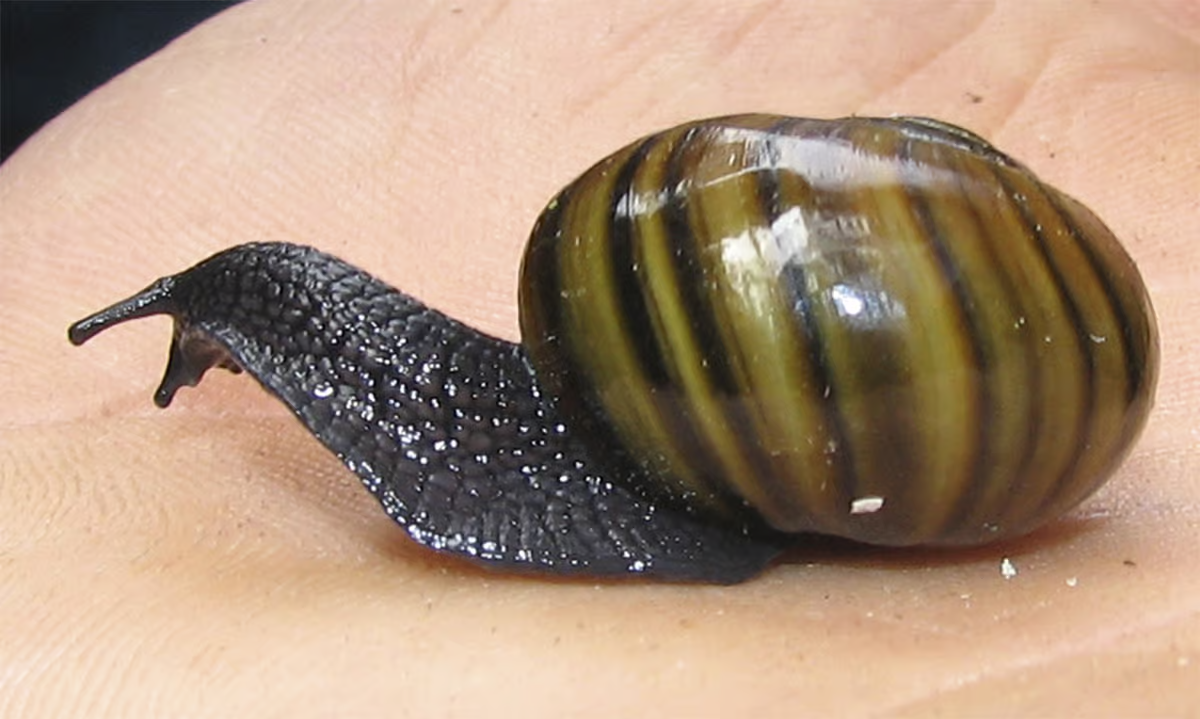Mount Augustus Snail | 31 May 2025
For the first time, the rare Mount Augustus Snail (Powelliphanta augusta snail) has been filmed laying an egg from its neck, revealing unique reproductive behavior.
- Biology & Characteristics: Endemic to New Zealand, it is among the world’s largest carnivorous land snails. It is distinguished by its vibrant, swirling shell patterns.
- This slow-growing species preys on slugs and earthworms. In captivity, it has a lifespan of 25 to 35 years.
- Reproduction: It is hermaphroditic (have both male and female organs), mating through mutual sperm exchange via a genital pore on the neck.
- It reaches sexual maturity at 8 years, lays around 5 eggs annually, and each egg takes over a year to hatch.
- Threats & Habitat Loss: Native only to Mount Augustus (New Zealand), its habitat was destroyed by coal mining in the early 2000s.
Snails:
- Snails are mollusks belonging to the gastropod class, easily identifiable by their spiral shells, which they retract into for protection or when resting.
- They are one of the two primary species in this class, with the other being slugs. The key difference between snails and slugs is the presence of an external shell in snails, while slugs lack one.
| Read More: New Species of Land Snail in Maharashtra. |

